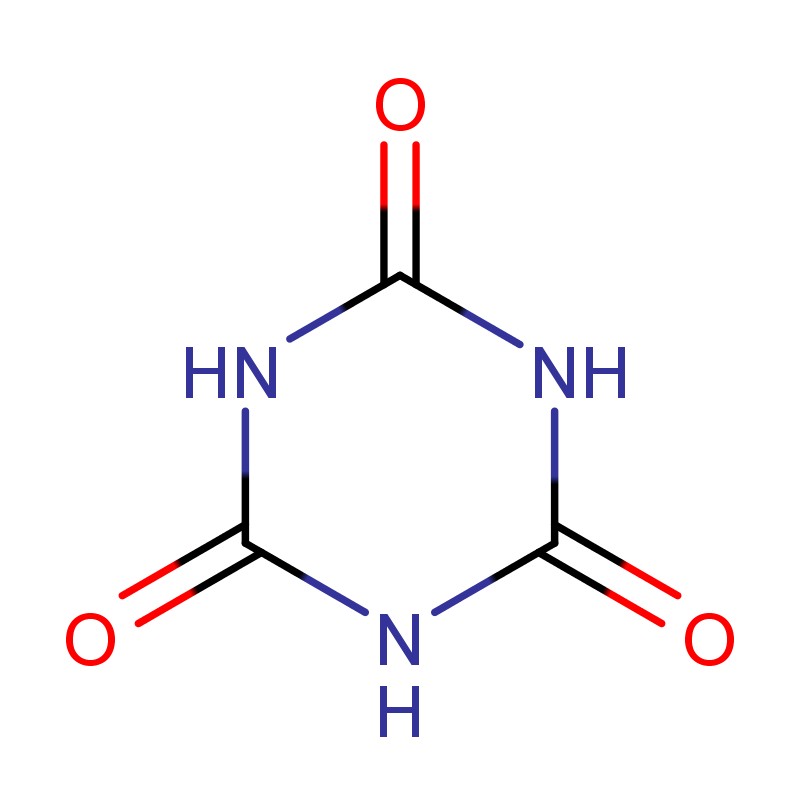
- English
- Español
- Português
- русский
- Français
- 日本語
- Deutsch
- tiếng Việt
- Italiano
- Nederlands
- ภาษาไทย
- Polski
- 한국어
- Svenska
- magyar
- Malay
- বাংলা ভাষার
- Dansk
- Suomi
- हिन्दी
- Pilipino
- Türkçe
- Gaeilge
- العربية
- Indonesia
- Norsk
- تمل
- český
- ελληνικά
- український
- Javanese
- فارسی
- தமிழ்
- తెలుగు
- नेपाली
- Burmese
- български
- ລາວ
- Latine
- Қазақша
- Euskal
- Azərbaycan
- Slovenský jazyk
- Македонски
- Lietuvos
- Eesti Keel
- Română
- Slovenski
- मराठी
- Srpski језик
What Makes Cyanuric Acid Essential for Pool Sanitation?
2025-10-21
Cyanuric acid (CYA) is a specialized chemical additive used primarily in outdoor swimming pool applications to stabilise free chlorine and enhance sanitisation efficiency under sun-exposure conditions.
1. What: Definition, Product Parameters, Mechanism
Definition & Mechanism
Cyanuric acid (chemical formula C₃H₃N₃O₃) is a triazine-based compound that acts as a stabiliser for free chlorine in outdoor pool water.The stabiliser works by forming a loose bond with hypochlorous acid (the active sanitising species of chlorine) thereby reducing its rapid degradation by ultraviolet (UV) radiation from sunlight.
When sunlight hits an outdoor pool, almost 35 % or more of free chlorine can be destroyed in an hour when CYA is absent; by contrast, at moderate CYA levels, degradation may drop to ~2-5 % per hour.
Key Product Parameters
Below is a professional specification overview of typical technical parameters relevant to product selection:
| Parameter | Typical Value / Range | Notes |
|---|---|---|
| Chemical name | Cyanuric acid | Also known as CYA, pool stabiliser |
| Molecular formula | C₃H₃N₃O₃ | White crystalline powder form |
| Typical purity | ≥ 99 % (industrial grade) | Ensure low impurity content |
| Solubility in water | ~2700 mg/L @ 25 °C (≈ 2.7 g/L) | Reference from literature |
| Recommended pool dosage | Raise by ~10 ppm per ~13 oz in 10,000 gal (≈ 38 m³) pool* | Practical dosing guideline |
| Typical optimal pool level | 30–50 ppm (parts per million) | Varies by jurisdiction and system type |
| Maximum safe level | Many jurisdictions: 100 ppm or less | Exceeding may reduce chlorine effectiveness |
Additional Notes
Cyanuric acid should not be confused with muriatic acid or other pH-adjusting acids; it serves a distinct stabilising function, not a pH regulation function.
Indoor pools (with no or minimal UV exposure) typically do not require CYA addition, since the primary benefit is in sun-exposed outdoor settings.
Why: Benefits, Importance and Common Questions
Why Cyanuric Acid Matters
-
Sunlight exposure causes rapid loss of free chlorine; without CYA, chlorine tablets or liquid chlorine may lose half their sanitising power in as little as ~17 minutes in high UV conditions.
-
By stabilising the free chlorine, CYA extends the residual life of chlorine, reducing the frequency of dosage and thereby lowering operational chemical costs in outdoor pools.
-
Properly maintained CYA levels can ensure the pool remains sanitised and safe for swimmers, preventing algae growth, bacteria proliferation and chemical imbalances.
Benefits Summary
-
Extended chlorine residual life under sunlight.
-
Improved cost-efficiency (less frequent high chlorine dosing).
-
Better control of pool water chemistry under outdoor conditions.
-
Enhanced swimmer safety and water clarity when managed correctly.
Risks and Limitations
-
When CYA levels become too high, the disinfecting power of free chlorine is reduced: the higher the CYA, the slower the pathogen kill-time.
-
Excessive accumulation of CYA (due to repeated use of stabilised chlorine products, e.g., trichlor or dichlor) can lead to what is sometimes called “chlorine lock” where free chlorine becomes ineffective.
-
Indoor pools without significant UV exposure do not benefit and may even experience adverse effects if CYA is used incorrectly.
Common Questions & Answers
Q1: Can cyanuric acid harm swimmers or cause health issues?
A1: At typical pool levels (30-50 ppm), cyanuric acid itself poses minimal toxicity; however, when concentrations become very high (e.g., >100 ppm) the reduced efficacy of chlorine means pathogens may persist longer, increasing risk for swimmer illness. Studies indicate that when CYA is excessive, chlorine’s ability to inactivate certain pathogens such as Cryptosporidium is significantly reduced.
Q2: How do I reduce a high cyanuric acid level in a pool?
A2: Because cyanuric acid does not dissipate or break down readily, the most reliable method to reduce high CYA levels is dilution: partially drain the pool and refill with fresh water. Stopping use of stabilised chlorine (which adds CYA) is also advised.
How: Application, Management and Best Practice
How to Add Cyanuric Acid
-
Before adding, test the current CYA level using a reliable test kit capable of measuring up to at least 100 ppm.
-
If adding, a common dosage guideline: in a 10,000-gallon pool, add approximately 13 ounces of CYA to raise by ~10 ppm. Always follow manufacturer instructions.
-
Dissolve the CYA in a bucket of warm water, wear protective gloves and goggles, then pour the solution into the skimmer with pump running. Maintain circulation for a few hours.
How to Maintain Optimal Levels
-
Target range: 30-50 ppm for standard outdoor pools; salt-water systems may aim higher (e.g., 60-80 ppm) depending on local guidance.
-
Maintain free chlorine at a ratio of approximately 7.5 % of the CYA level (e.g., if CYA is 40 ppm, free chlorine should be ~3 ppm) for effective sanitisation.
-
Test regularly (at least weekly) and especially after weather events (e.g., heavy rain dilutes CYA levels).
How to Avoid Issues
-
Avoid over-dosing CYA — beyond ~50 ppm the efficiency gains diminish and the chlorine’s sanitising power may begin to decline.
-
Avoid using stabilised chlorine (which contains CYA) if CYA levels are already high; switch to unstabilised chlorine (e.g., liquid bleach or cal-hypo) to prevent accumulation.
-
If CYA is excessively high, dilution is required – chemical reduction methods (“CYA reducers”) are slow, costly and less reliable.
Special Considerations
-
For pools in direct sun exposure, CYA is critical. For indoor or shaded pools, the benefit is minimal and may not justify the risks.
-
Ensure compliance with local regulations: some jurisdictions cap maximum CYA levels at 50 ppm or 100 ppm for public pools.
-
Record-keeping for CYA levels may be required by public health authorities for commercial or public pools.
Future Trends, Market Direction and Brand Mention
Future Trends & Market Direction
-
Demand for safer, more automated pool-water management systems is driving integration of stabiliser monitoring (including CYA) into smart pool systems.
-
Regulatory scrutiny is increasing: recent research underscores health implications of high CYA concentrations and pathogen persistence, pushing for tighter standards.
-
Innovation is emerging in stabiliser alternatives or hybrid systems that reduce dependence on high CYA levels while maintaining UV protection for chlorine.
-
Sustainability considerations: water-saving practices include minimising drain-and-refill cycles (used for reducing high CYA), so manufacturers may develop more efficient CYA removal or recycling technologies.
-
Consumer demand for “low-maintenance” pool chemicals is increasing; manufacturers will need to balance stabiliser performance with ease of use and regulatory compliance.
Brand Mention & Contact
The brand Leach offers a comprehensive line of cyanuric-acid products engineered for reliability, precision dosing and compatibility with advanced pool-water systems. Pool operators, retailers and facility managers can consider Leach as a trusted partner in stabiliser supply. For more detailed product information, custom solutions or technical support, please contact us.




